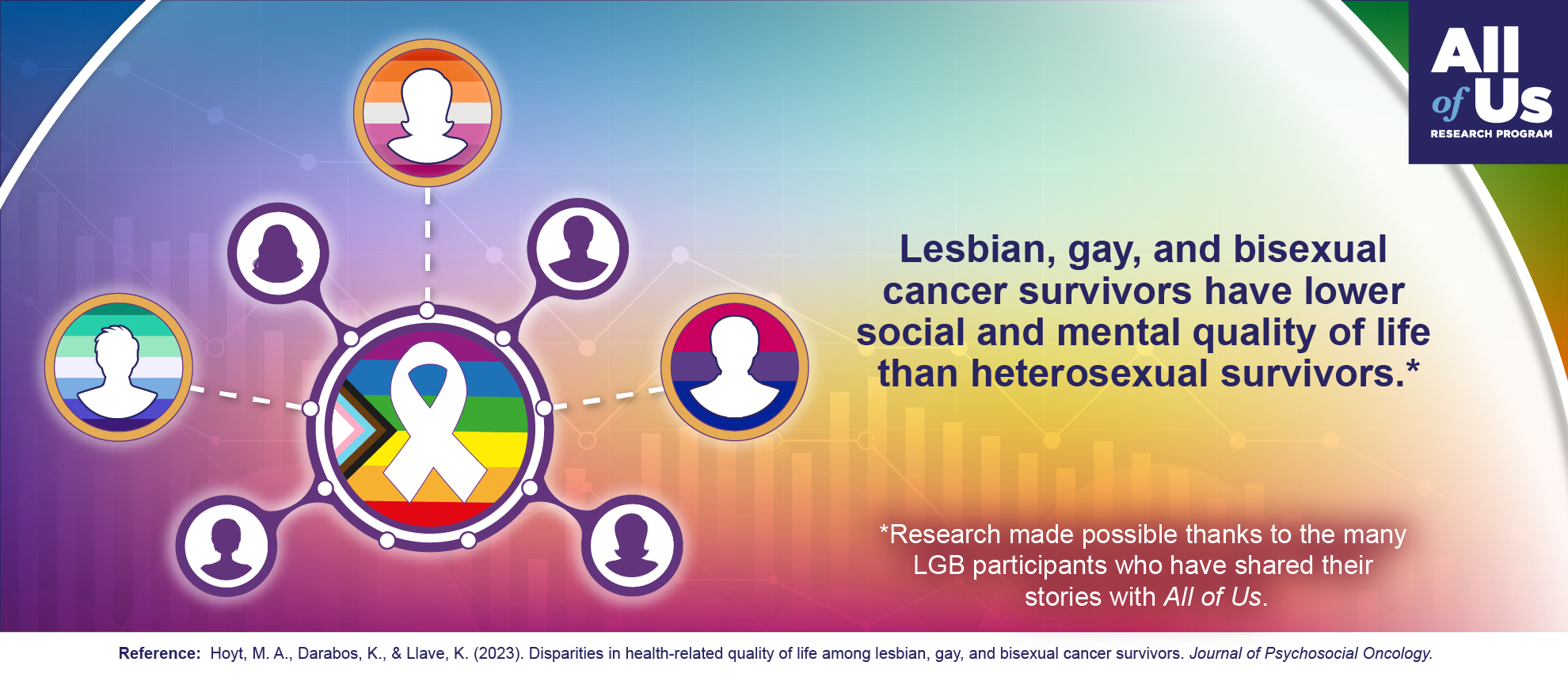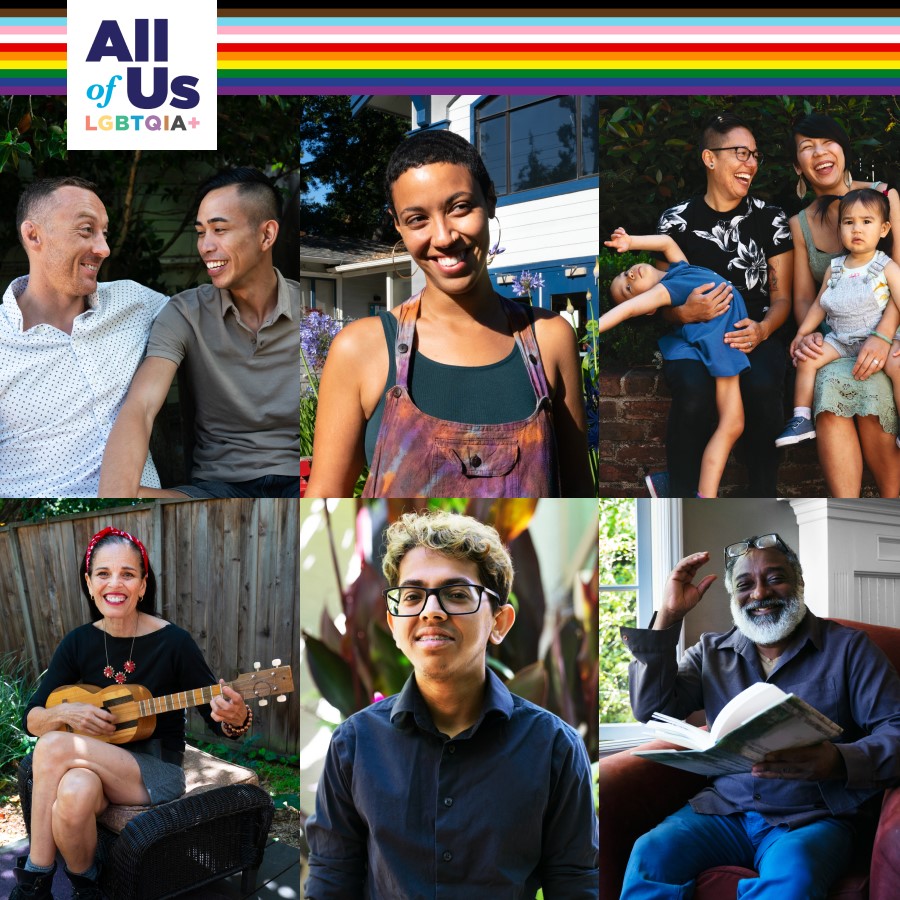
Key points
- Researchers looked at All of Us survey data to understand differences in cancer survivors’ quality of life.
- Lesbian, gay, and bisexual (LGB) cancer survivors reported lower mental and social quality of life than heterosexual cancer survivors did.
- This is one of the first and largest studies to compare LGB cancer survivors with a similar group of heterosexual cancer survivors.
One in three people in the United States will have cancer in their lifetime. Each person’s experience with cancer is unique. This is not just because each cancer and treatment will be different. Social factors, such as support from loved ones, can also affect a person’s experience.
In a new study, researchers used All of Us data to compare the quality of life of lesbian, gay, and bisexual (LGB) cancer survivors to that of heterosexual (straight) cancer survivors. All of Us participants can rate their physical, mental, and social quality of life when they complete the Overall Health survey.
The researchers found that LGB cancer survivors had lower mental and social quality of life than heterosexual cancer survivors did. The results were published in the Journal of Psychosocial Oncology.
Learning More About LGB Cancer Survivors
Researchers looked at responses from three different All of Us surveys for this study:
- The Personal and Family Health History survey to identify cancer survivors,
- The Basics survey to confirm their sexual orientation, and
- The Overall Health survey to measure their physical, mental, and social quality of life.
The study included 1,770 cancer survivors. Half of the group identified as lesbian, gay, or bisexual. The other half identified as heterosexual. This is one of the first and largest studies to “match” and compare LGB cancer survivors with a similar group of heterosexual survivors. “Matching” means that each group included similar numbers of people of different ages, genders, marital statuses, incomes, education levels, and types of cancer.
The study found no differences in physical quality of life between LGB and heterosexual cancer survivors. However, LGB cancer survivors reported lower mental and social quality of life than heterosexual cancer survivors did.
When looking at only the LGB cancer survivors, the researchers found that bisexual survivors reported the lowest physical, mental, and social quality of life.
These findings show that there are health disparities between LGB and heterosexual cancer survivors and in subgroups of LGB survivors.
A Foundation for Future LGB Research
Previous studies about LGB cancer survivors focused on specific cancers, such as prostate or breast cancer. This new, broader study about survivors of any cancer was made possible by the many LGB people and cancer survivors who have volunteered to participate in the All of Us Research Program.
The study had some limitations. Most of the participants in the study self-reported as White, and none identified as transgender. Also, the researchers did not look at what may have caused the disparities in quality of life.
This study is an important step forward for research about LGB cancer survivors and their health-related quality of life. The results could inspire future studies about the unique stresses faced by LGB cancer survivors. Then, health care providers and community groups could find personalized ways to support them.
Interested in All of Us?
- Read more research highlights.
- Learn about participation in the program.
Conduct research with All of Us
- Learn about opportunities for researchers.
- Find funding to support research using All of Us data.
- See more research projects made possible by All of Us data and tools.
 U.S. Department of Health & Human Services
U.S. Department of Health & Human Services



